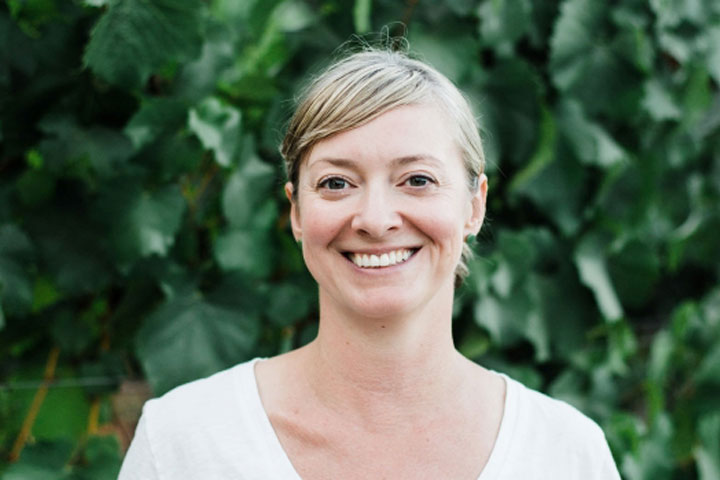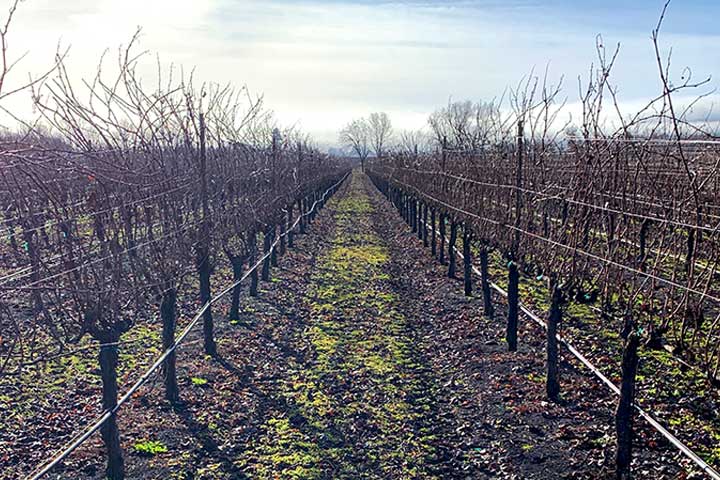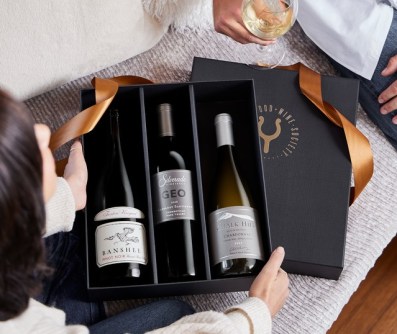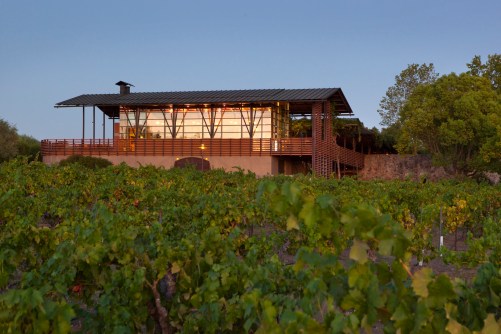It’s hard to believe it, but we’ve been interrupting Foley Family Wines Director of Viticulture Kara Maraden for an entire growing season now. We’ve asked her to take a bit of time each month to tell us all about the farming vineyards in our series “Life of the Vines.” (In case you missed the previous iterations, you can find them here: November, October, September, August, July, June, April).
For the final month of 2020, we asked Kara to talk about everything from winter dormancy to growing grapes at home and wondered if she might dispel a few common misconceptions about growing grapes. We’re so grateful for all her hard work, which is something we can literally taste in every bottle of Foley wine. So, kick up your feet, and enjoy Kara’s last “Life of the Vines.” We hope all this farming talk makes you thirsty!

KARA MARADEN, DIRECTOR OF VITICULTURE
FFWS: Winter in the vineyards is a bit different than winter in places where it gets incredibly cold. But how cold does it typically get in CA, OR, and WA, where you farm?
Kara Maraden (KM): Winter on the west coast is as varied as it is throughout the country. Winter in California on the central coast and Northern California sees huge diurnal swings in the winter as well as the summer. We typically see high-20s at night to mid-60s during the day, giving us 30-40 degree swings in a 24 hour period. Oregon and Washington see less of a swing. Where we farm in the Willamette in Oregon we see swings of 20-30 degree swings and we can get snow—although that is rare. In Washington, we see very steady, cold days and snow is very normal. It does get very cold everywhere we farm, even Santa Barbara in the winter, it is just during the middle of the night when we are less aware of it. I have seen temps in the teens at all of our vineyards during the night.
FFWS: What is going on in the vine during winter dormancy?
KM: The weeks leading up to full vine dormancy are very interesting and the vines are showing us this transition. As the temperatures cool and the days get shorter, they act in the same way as many other deciduous plants, the leaves change colors. Different cultivars show this process in the different colors they express as they are shutting down. The leaves are no longer producing chlorophyll. The loss of chlorophyll and the movement of carbohydrates to the roots reveals other polyphenols that are present. Deep red/blue fruit cultivars that have high levels of anthocyanin such as Petite Syrah and Petit Verdot can turn very red. Many other red cultivars should just turn yellow or orange and white cultivars such as Chardonnay and Sauvignon blanc don’t have those red anthocyanins so they just turn yellow. Some spotty red vines in the fall among other yellow looking vines can indicate that the vine has a virus. But if the color is uniform, it is just the natural process of things. Healthy vines will lose their leaves once water has stopped moving in the shoots and a strong wind or the rain knocks them off.
FFWS: What kind of farming is required throughout the winter months?
KM: One of the most important cultural farming practices happens during the winter months. Once we feel that the vines have had enough cold nights and are in dormancy we will start to prune. Typically, you don’t want to prune until there is no sap (which is mostly just water) that seeps out of a cut you make to the old cane. Some pre-pruning may happen in early winter. This just means that people or machines go in and cut most of the canes from the canopy at a height of 12 inches or so above the head or the cordon and then those old canes are removed and untangled from the wires. This is just so we can make it easier to get the cuts we want when the crews go in and do the final job. This way they do not have to remove all the old canes from the wires and they can move more quickly and accurately.
FFWS: Sometimes, driving by a vineyard, you might see a massive pile of vines. Assuming it’s because a decision was made to replant, why does that typically happen in the winter? When a vineyard is cleared, how long before it is replanted typically? Can you use the phrase “lie fallow” and describe what that means?
KM: When a vineyard is going to be replanted the decision of when to remove it is usually an economic one. You won’t have a producing crop for at least three years. So the vines are given one more harvest and then they are torn out. It is also because the soil is currently dry and the equipment can get in to do the job. The soil will be easier to work with after the winter rains in the spring. If the field is fallow in the spring (meaning there is no crop growing in cropland), this gives us time to do all the things we need to do in the vineyard before replanting can happen. Working the ground as soon as it is dry enough, applying amendments, setting up irrigation lines and stakes, this all happens the next spring and summer. We are in the process of replanting hundreds of acres right now and we typically see a two-year process before new vines are in the ground. However, this very much depends on the operation. The turnaround can happen in just one year if everyone is hustling. The field will lie fallow for one season before it is planted.
FFWS: Looking ahead to warmer days already, when does a vineyard first begin to wake from winter dormancy? What makes for an ideal spring in terms of weather?
KM: Winter dormancy ends when enough accumulated chilling hours have been achieved—about 150 for vines. A chilling hour is the time the vine spends with the temperature between 45 degrees F and 32 degrees F. Once enough hours have accumulated the weather may still be too cold for bud break so the vine remains dormant until the temperatures get warmer. An ideal winter and spring are cold temperatures and plenty of rain. We ideally want the ground to have moisture when the vines wake up so they can start to pull resources from the soil. If it is too dry it is very difficult to get the nutrients the vines need to really reach their healthy max growth that season. This is especially the case with Nitrogen uptake.
FFWS: As someone who works outdoors for a living, in a vineyard for most of your day, what advice would you give to would-be growers or amateur growers about planting a few simple vines in a home garden? Can it be done? What is best to plant in the Pacific Northwest or wetter regions like Florida, or cold places like New England?
KM: Vines are very easy to grow actually. They just need nutrients water and space. It takes about 85-90lbs of grapes to make about 5 gallons of wine and the cultivars all have different outputs but a typical Vitus vinifera vine can produce 10-30 lbs of fruit, varying quite a bit depending on the grape. I would say go for it but make sure you keep them under control because they are vines! Making wine is a different story. Table grape varieties are a real joy to grow and eat fresh off the vine. I wouldn’t recommend growing wine grapes in humid hot areas. There are wild species of grapes that grow all over the world but in these climates, the disease pressure is very high and your chances of getting viable and quality fruit is low. But I’m sure someone out there is making a go of it. Varieties like Riesling do very well in colder climates as well as so many American hybrid cultivars such as Chambourcin, Vidal Blanc, and Marquette. These cultivars have been grown for decades in the Northwest. Fact is, grapes are grown in every state at this point. Pretty impressive.
FFWS: What is one of the greatest myths people have about grape-growing? Something you hear over and over, that you’d like to dispel.
KM: There are a few myths that I can dispel. One is that grape-vine farming uses tons of pesticides and water. As a community of farmers, we are keenly aware of our environment and have worked very hard to be as sustainable and regenerative as we can be. Grapes actually use very little compared to some other crops and we are all in it for the long haul so taking care of our environment is very important.
The other is that grape-growing is so “Romantic.” It can be in the big picture but farming grapes is very hard work, it’s long hot days and long cold nights with so many uncertainties. But it is extremely rewarding when you see those grapes go into a beautiful bottle of wine. Especially when you pop the cork.




